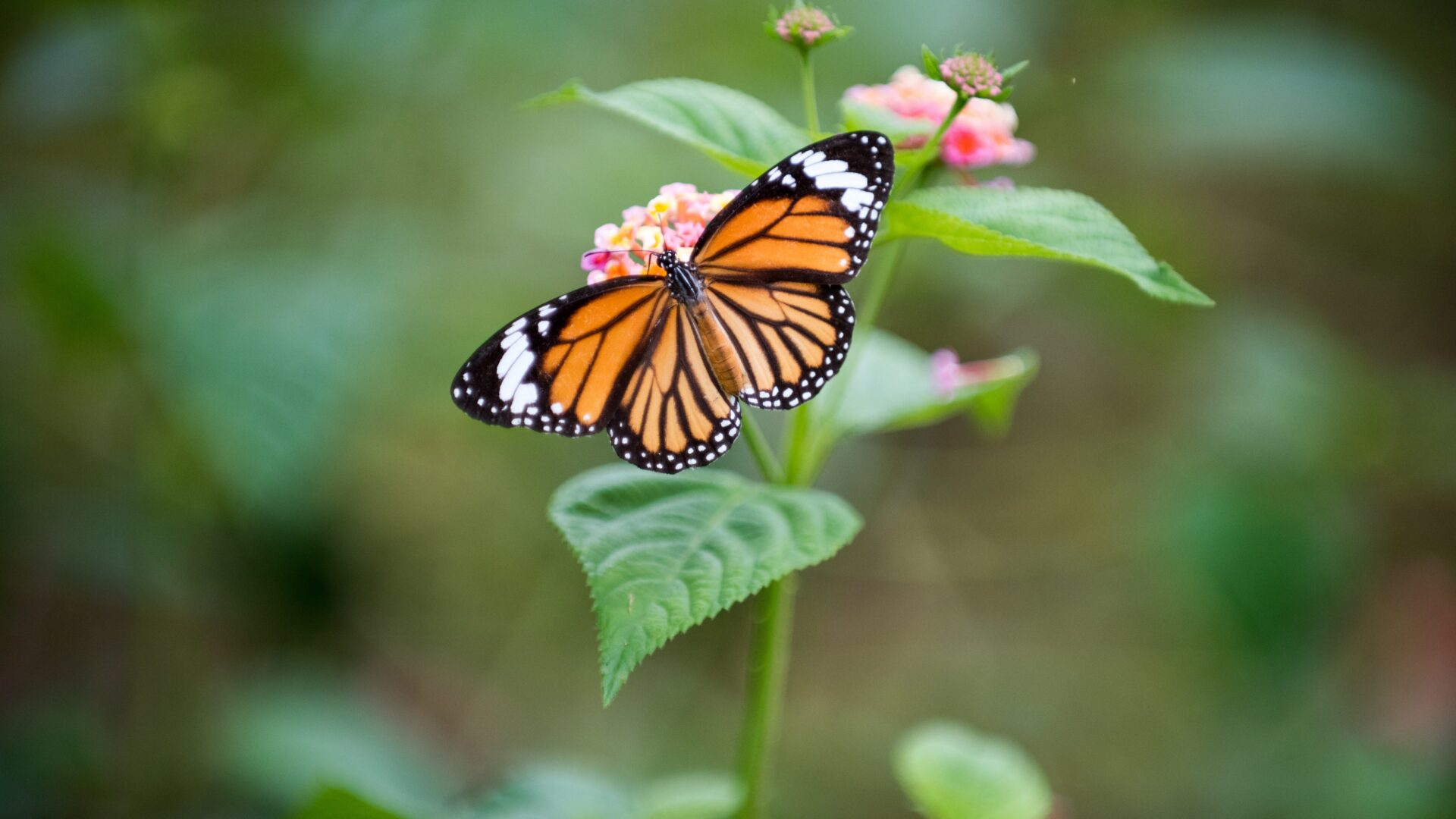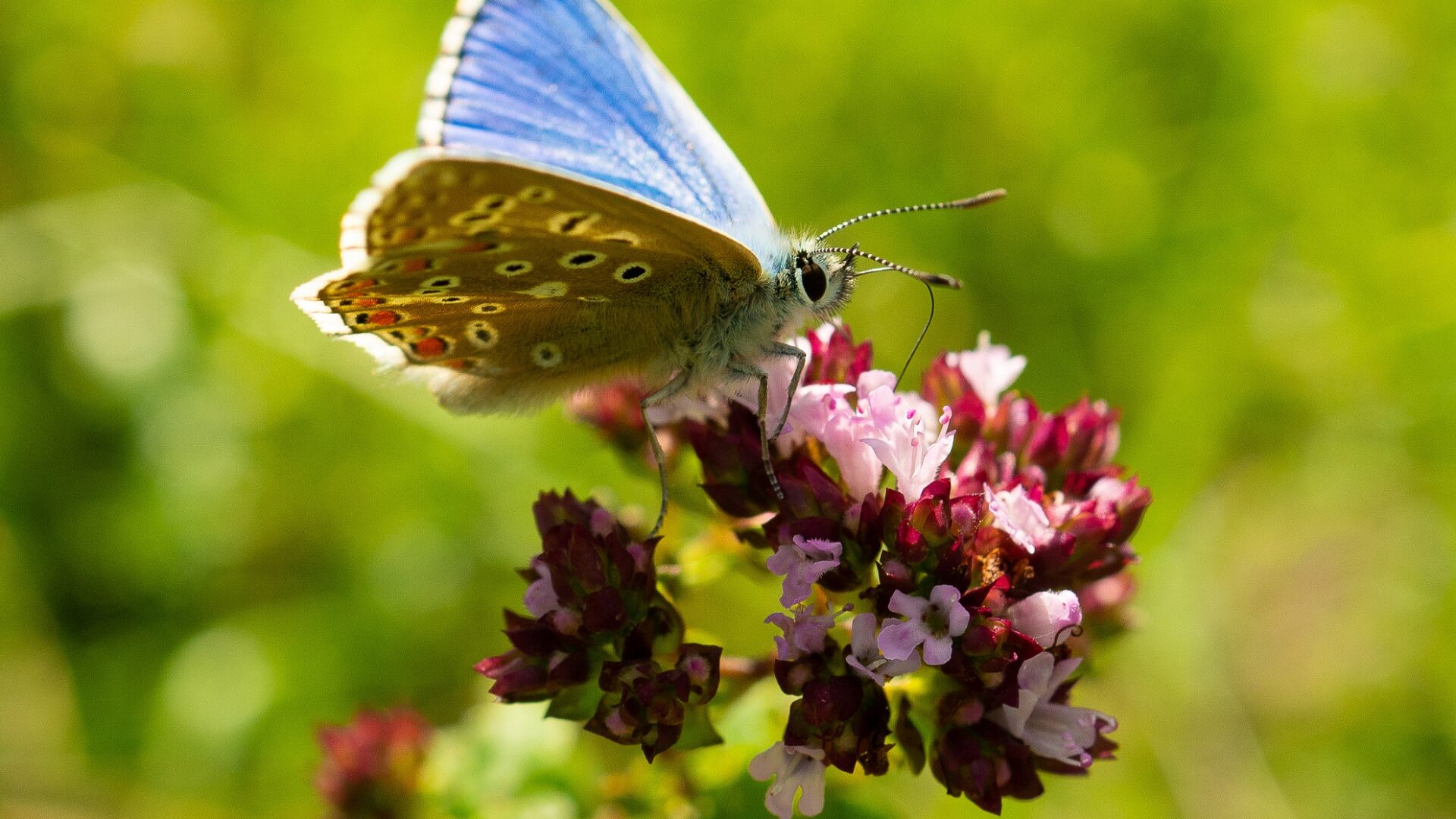
Look Wild: Helping Butterflies in the South Downs
-
Date posted: 26/01/2023
-
Time to read: 10 minutes
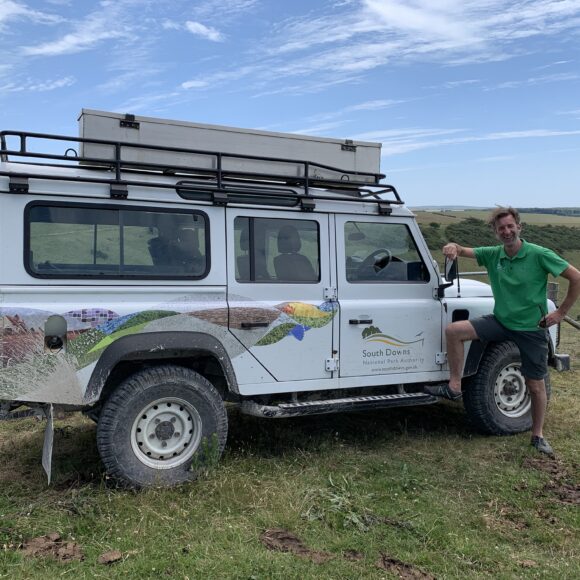
Tim Squire
Ranger Tim Squire from South Downs National Park Authority gives an update on the conservation efforts to help Grayling numbers, their comeback and the process of conserving butterfly and insect rich habitats and chalklands.
It is very hard to see a Grayling butterfly on the South Downs. This is partly because this master of disguise, when it lands, blends magically with the background and disappears from sight. One of the only places you can find them in the South Downs is in one secluded valley nestled in the rolling hills above Wilmington, East Sussex (famous for the Long Man chalk figure).
The Grayling Butterfly can be found in costal areas, grassland and lowland heath in southern parts of the UK. Once a widespread butterfly on Chalk Downland, their numbers have declined. The widespread destruction of Chalk Grassland due to agricultural activity from the middle of the twentieth century onwards is the obvious primary reason for the decline in numbers. This butterfly shares habitats with the other Chalk Grassland specialist like the Adonis Blue and Chalkhill Blue.
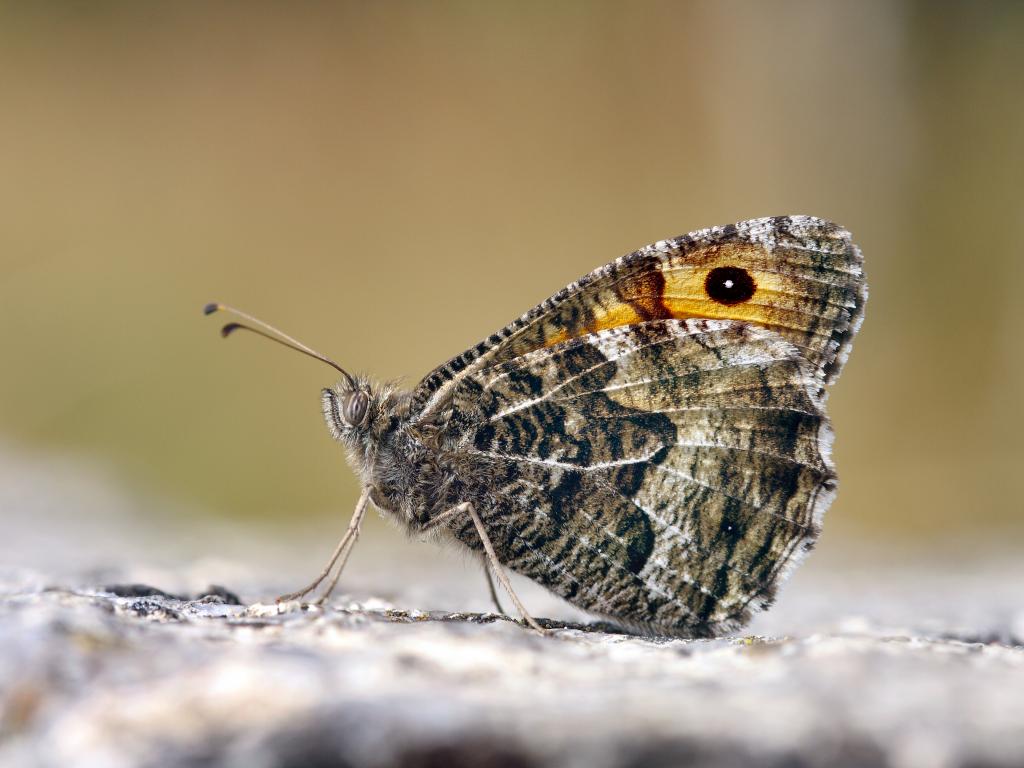
Trying to work out what the requirements are of the “chalk race” of Grayling butterfly has been the challenge of the last few years in order to prevent this butterfly from declining. With maximum numbers of individual butterflies only making it into the low 20’s a concerted effort was needed.
In 2018, we brought in some Exmoor Ponies to do some heavy lifting on the grazing front. The South East facing slope where the Grayling live was being lost to Tor Grass (Brachipodiom pinnatum). Sheep will not touch this tough, coarse grass and it was covering large areas of the favoured slope. It forms dense mats and crowds out all of the more delicate Chalk Grassland species including the fine-leaved Sheep’s Fescue grass (Festuca ovina) which is the caterpillar food plant.
Exmoor Ponies however devour Tor Grass with gusto. These tough beasts are brilliant at winter grazing and have done wonders in Deep Dean (the name of the Grayling valley). The ponies belonged to the Sussex Pony Grazing and Conservation Trust. The Trust was winding up its operations in the area and was looking for homes for its herd. The farmer who grazes Deep Dean decided he would be able to take 12 of the ponies. This was an amazing development and has meant Exmoor Ponies have grazed the site every winter since. In fact, he grew the herd and now grazes a number of other Chalk Grassland sites in the area.
As well as creating the right sward the other requirement that we thought was important to the Grayling butterfly was bare ground. When the Grayling lands it always closes its wings. For a brief few seconds it will display black eye-spots on an orange background but it quickly draws the forewing behind the hindwing leaving only the cryptic colouration visible. The colour of the underwing perfectly matches disturbed chalky soil so it is hardly surprising perhaps to find that the butterfly has a requirement for bare patches of earth. These would usually be in plentiful supply from the activity of Rabbits but due to lower rabbit numbers the scrapes were vegetating over and disappearing. We therefore undertook work to make our own simulated Rabbit scrapes. The artificial scrapes we have dug have been readily used by Graylings. They thermoregulate on the bare ground to warm up – Graylings love it hot – but perhaps most importantly they have been observed laying eggs on the exposed roots of the Sheep’s Fescue at the edges of the scrapes.
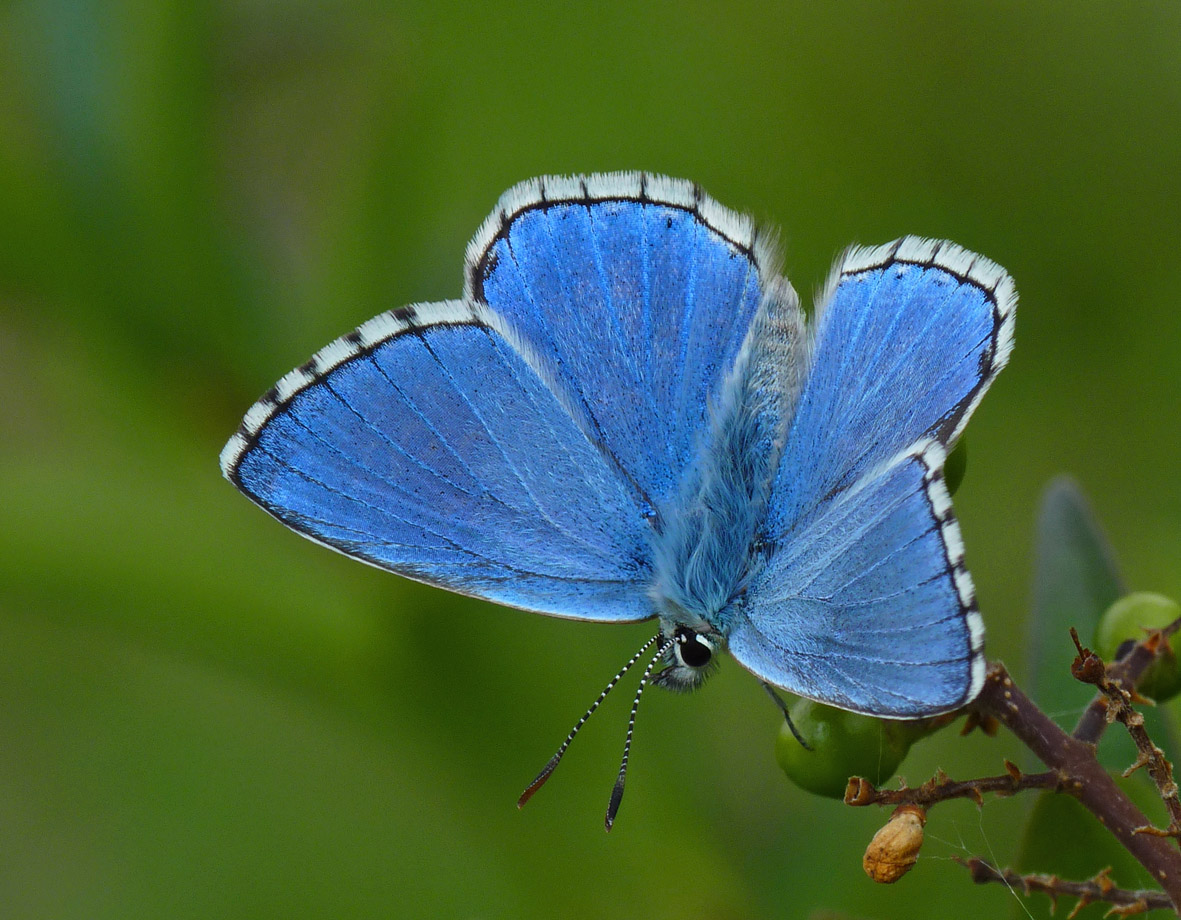
Numbers of Grayling in Deep Dean plummeted to an all-time low in July 2019 with a maximum count of 16. I hoped the efforts we had put in with the grazing and scrapes would pay off and the butterflies would respond to the improved habitat they emerged into.
It seemed that perhaps we had saved the butterfly from the brink in this area as the next year we managed to get a maximum count of 43. Still very worrying times but we continued with the pony grazing and digging of scrapes. 2021 was a very weird year for butterflies all round with a very cold and dry spring meaning all butterflies emerged about two weeks late and numbers were not strong. However, we managed to reach 48 Grayling one day in August last year.
On Saturday 16th July 2022, I received a message from the wonderful volunteer transect walker who walks up the hill every year numerous times during the flight season counting the precious Grayling. I was jumping with joy when he told me he had counted 158 butterflies. I had planned to go paddling in the sea on the Sunday, which might have been a sensible thing to do in the scorching heat, but instead I braved the sun-baked slopes of Deep Dean and saw a profusion of Grayling. This is a bit of an exaggeration as there were hardly what could be described as clouds of butterflies but I was delighted to count 51 in a loop of the favoured part of the valley in an hour.
It seems the concerted efforts we have put in at Deep Dean are paying off. This boost in numbers means we are getting things right. But the Grayling butterfly is still in a perilous situation. A population of butterflies cannot survive indefinitely restricted to one colony on one hillside. This means we need to take action across the landscape. I am working hard with landowners nearby to create the conditions needed for the Grayling to recolonise other sites to the immediate east and west. The Exmoor Ponies are crucial in this work. Also the knowledge that bare ground is so important will help us create the ideal conditions. The Grayling will readily disperse and if we can keep numbers increasing in Deep Dean it will hopefully spread its wings and find suitable habitats waiting for it not too far away in the near future.
Work to carry out habitat improvements has been funded by the South Downs National Park Authority and a fencing project was match funded by Butterfly Conservation. I would like to thank Neil Hulme, for his expert advice and superb local knowledge, and the indomitable Patrick Moore for his herculean efforts counting and observing the Grayling on what must be the most arduous butterfly transect in the National Park. The support of the Sussex Branch of Butterfly Conservation has been invaluable. I also want to thank the South Downs Volunteer Ranger Service for their great Rabbit imitation work and the South Downs National Park Ranger Team who stepped in during Covid to do the same. The Grayling flies again!
Have you spotted any interesting butterflies or other insects?
Join i-Naturalist and start identifying nature near you today! LookWild is a brilliant citizen science project that helps contribute to our data and knowledge of wildlife and habitat health across the UK.
This Blog was written by Tim Squire, Ranger from South Downs National Park Authority.
